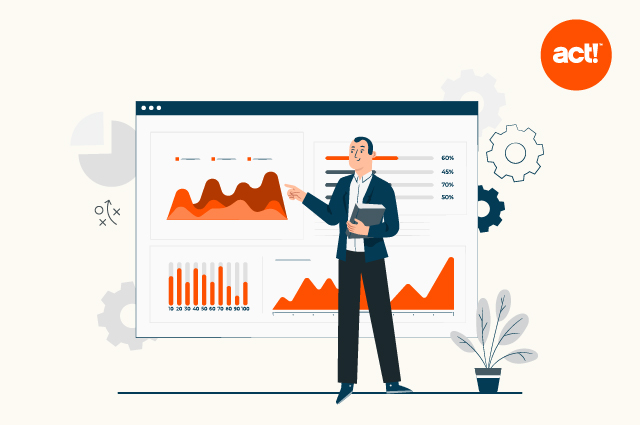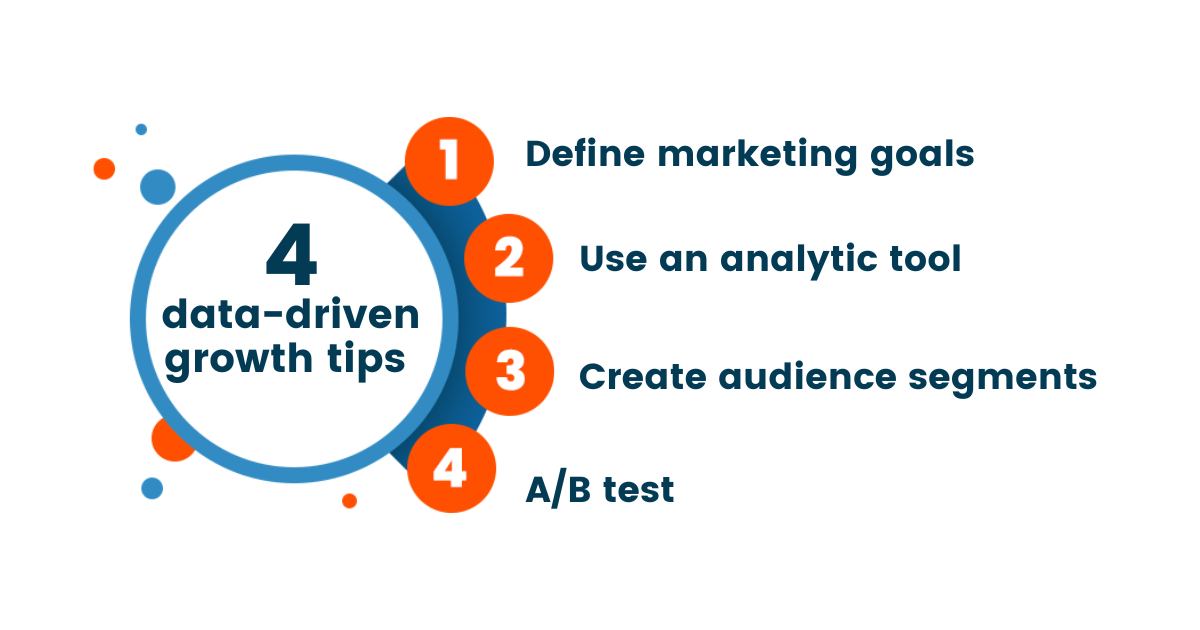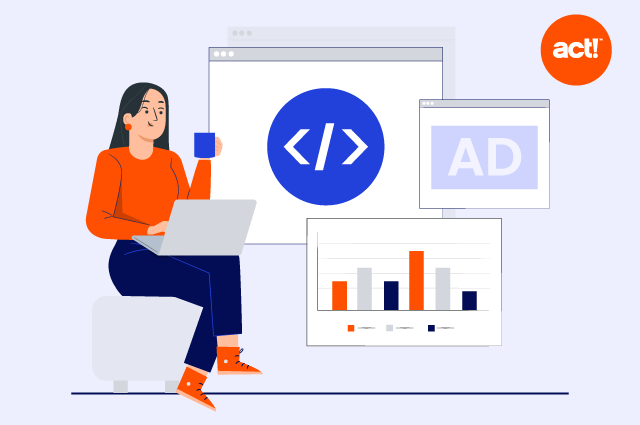
Do you know the biggest difference between successful and failed marketing campaigns?
Data-driven decision-making.
Modern-day marketing isn’t about following your gut feeling or pursuing ideas from the top of your mind. If you want your marketing campaigns to hit the mark every time, you must rely on accurate, reliable, and comprehensive data.
But what exactly is data-driven marketing, and how does it work? In this article, we’ll explain data-driven marketing strategies with examples, explain why they’re important to small and mid-sized businesses, and share tips to help you get started.
What is data-driven marketing?
Data-driven marketing is the practice of using solid, reliable, and in-depth customer data instead of personal opinion or gut feeling to devise a marketing strategy.
Data-driven marketers use customer relationship management (CRM) software and various user-tracking platforms to gather real-time data from multiple customer touchpoints, including websites, landing pages, mobile apps, chatbots, and email marketing campaigns. This helps them understand how users engage with their brand, what content or products interest them most, and what motivates them to take action.
Why is this important? When you understand user behavior, you can create tailored marketing campaigns that speak directly to their pain points and drive higher conversion rates. Research shows that personalized digital marketing campaigns backed by reliable data deliver a five to eight times higher ROI than traditional marketing and generic advertisements.
Data-driven marketing examples
Curious? Let’s look at a few real-world examples of how businesses use data-driven marketing:
- Email personalization: Through accurate data collection, you can create personalized email marketing campaigns that respond to customer behavior. For example, if a user has previously purchased a product, you can automatically send them updates on new variants and models.
- Product recommendations: Instead of showing users generic products on your website, data-driven marketing allows you to use their past behavior data to display the products they’re most likely to buy.
- Dynamic content: Using data insights and analytics, you can show website visitors content that’s closer to their interests instead of bombarding them with irrelevant posts. This enhances your content marketing efficiency and improves lead generation.
4 benefits of data-driven marketing for SMBs
Whatever form it takes, data-driven marketing offers numerous benefits for SMBs. Here are just a few.
1. Optimize marketing costs
When you have the correct data, you know exactly whom to target with your marketing campaigns, where to approach them, and how to design a personalized marketing message that engages your audience.
This allows you to optimize your marketing costs by focusing on your most profitable channels and diverting resources from avenues that aren’t driving results.
2. Understand real customer needs
The most critical business benefit of data-driven marketing is that it allows you to understand your target audience‘s real motivations, needs, wants, fears, and aspirations. The more data you collect across the customer journey, the easier it becomes to predict audience behavior and design solutions they’ll willingly buy.
This can transform your business and allow you to focus all your marketing efforts on resolving your customer’s actual pain points and becoming their favorite brand by making informed decisions.
3. Craft compelling stories
Marketing is all about storytelling. With in-depth data, you know what stories appeal to your audience and inspire them to take action. As a result, you can craft a consistent brand story that drives results all the time.
4. Boost conversions
When you understand your audience’s needs, personalize your campaigns, and craft stories around their pain points, conversions are inevitable. The more data sources you have, the easier it becomes to target your audience and convince them to take your offer.
3 data-driven marketing mistakes to avoid

Despite its many benefits, success isn’t a given with data-driven marketing. If you want data-driven strategies to drive results for your business, avoid these mistakes.
Focusing on vanity metrics
Vanity metrics inflate your ego and make you feel good about your brand. Metrics like the number of pageviews on your site or likes or shares on your social media posts are great for brand awareness but shouldn’t divert your focus from data that drive business results.
For example, what’s the conversion rate from pageviews to sales? Or the number of downloads resulting from a Facebook ad campaign? When tracking data points, make sure you focus on the ones that actually matter to your business.
Missing context
Marketing data without context can be misleading. You must look beyond numbers and determine their meaning for accurate decision-making. For example, an unusually high number of pageviews on a blog post doesn’t always mean you should cover that topic more frequently. Sometimes, an article can go viral when an influential social media account shares it.
Similarly, an email with a low open rate doesn’t mean its subject or content wasn’t optimized. Maybe it wasn’t the right time to email your customers.
Before relying on numbers for your marketing strategy, be sure you understand what they mean.
Not responding to data trends
Sometimes, data do not validate your beliefs or personal preferences. This is when you must be flexible and willing to let the data guide you toward a course correction. When numbers indicate that your direction is off the mark, respond by reevaluating your strategy instead of remaining rigid.
4 tips to grow your SMB with data-driven marketing

By now, we hope you’re convinced of the importance of data-driven marketing and ready to dive in. Here’s how you can use data-driven marketing to grow your business
1. Define your data-driven marketing goals
What exactly do you want to achieve from your data-driven marketing campaigns? Are you looking to increase your email open rates, boost your landing page click-through rate, or find which Facebook ad copy to use? Clear goals allow you to set the right benchmarks to evaluate your campaign’s success.
2. Use an integrated CRM and automation tool
To collect data across your marketing funnel, you must use analytic tools like a CRM that monitors your existing customers and helps you track your landing page traffic and leads via data analysis. Act! CRM allows you to set up your demographic data, automate your marketing funnel, and closely monitor customer behavior. Your marketing team can use it to create landing pages, generate leads, and get a complete customer engagement history across your digital assets.
3. Create audience segments
Segmenting your audience according to their demographics, behavior, needs, or metrics helps you tailor your marketing strategy and craft the right messages. The deeper you dive into your data, the more trends you’ll see. For example, you can segment all users with specific recurring issues with your product or customers who purchase a specific product bundle every time. As you identify more audience segments, you can zoom into their specific needs to create personalized marketing campaigns and customer experiences.
4. A/B test your strategy
Data shows you direction, but testing tells you what’s working. Before making any marketing decisions based on a dataset, test and validate your findings.
For example, if the data tells you that people are bouncing off your landing page, test different variables to find the reason. They might be bouncing because your opt-in form is too long or it’s placed below the fold. Conversely, they might be distracted by the visuals or unclear headlines on your landing pages.
You can only find the real reason by changing these variables and A/B testing them one by one.
Data-driven marketing is the need of the hour
Your customers are online and use different platforms to find your products and engage with your brand. By tracking their behavior and collecting data, you can understand their real needs and craft more engaging marketing strategies that drive conversions.
With Act!, you can do it all in just a few clicks. Start collecting and leveraging data insights now with a 14-day free trial. No credit card or download is required.






